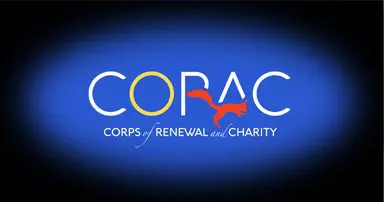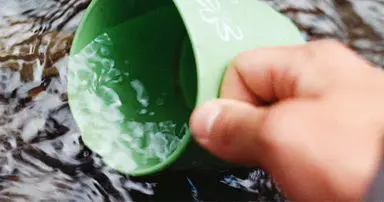Three Elements of Staying Healthy
To stay healthy after a disaster, you will need plenty of water and good sanitation practices.
#1 Water – Clean water is an essential resource especially after a disaster or crisis, e.g., earthquakes, hurricanes; not only for drinking to stay healthy but needed for cooking, hygiene, wound care, etc.
#2 Hand Washing – Proper sanitation is essential. Organize handwashing stations with clean water, soap, catch basin, nail brush and towel. In an emergency kit include alcohol-based hand sanitizers of at least 60% concentration. Gray water can be used to water trees, etc.
#3 Sewage Water Treatment – Even if you keep your space and your body clean, your urine and feces could still make you (and others) sick. Keep reading to find out how to safely contain, store, and eventually dispose of your urine and feces.
Method 1 – The Twin Bucket System
The Twin Bucket System was developed in Christchurch, New Zealand after the February 2011 earthquake. The system meets the criteria of being simple, cheap and effective. The key to this method is separating urine and feces. This lessens volume and odor, making bucket contents safer and easier to store and dispose of. This method is ideal for dense urban areas with limited open space and locations with a high-water table. Caution! It’s very hard to keep surfaces clean without running water. When using emergency toilets, it’s important not to touch human feces or let it touch other objects. Any surface that may come into contact with feces (such as a toilet seat) should be made of a non-porous, non-absorbent material that can be easily disinfected.
Materials:
- Two sturdy plastic (five or six gallon) buckets. One marked URINE or #1 and one marked FECES or #2.
- A toilet seat. You can adapt a regular toilet seat or buy a seat that is designed for use with buckets (available at most camping stores, emergency supply retailers, etc.). If you can, purchase two toilet seats – many people prefer to sit when urinating. Do not use a pool noodle! They are absorbent and porous. They are impossible to fully clean, which increases the risk of spreading disease.
- Layering material. Carbon-based materials work best. It should be lightweight, dry, and organic. The goal is to absorb moisture, reduce odor, and deter flies. You’ll need about a handful to cover each feces deposit. Examples: sawdust, shredded paper, bark chips (avoid cedar), dry leaves, dry grass clippings, peat moss, toilet paper, hamster bedding, etc. A roll or box of heavy-duty plastic garbage bags. 13-gallon size, 0.9 mil or thicker.
Separating Urine and Feces:
Urine has volume. Feces has pathogens (bacteria, viruses, and other microorganisms that can cause disease). When you mix urine and feces together, you get a large volume of pathogens. It also produces a terrible odor. If you keep them separate and layer the feces with carbon-based materials, the feces is able to dry out and reduce to a smaller volume, and the urine can be disposed of easily and harmlessly.
Using the Urine Bucket:
- Deposit your urine in the urine #1 bucket, but always put your toilet paper in the feces #2 bucket.
- Dilute urine with water (if possible), and spread it on a permeable surface, such as your lawn, garden, or the ground. Local governments may develop alternative urine collection sites in order to avoid water table contamination.
Using the Feces Bucket:
- Line your feces bucket with a sturdy trash bag.
- When using the feces bucket, it’s okay to put toilet paper in the bucket.
- After each use, cover the surface of the feces with a carbon-based material (see the materials list above). This will help reduce odors and minimize the attraction of flies.
- Do not put an airtight lid on the bucket. Allowing some air flow will help the feces dry out and reduce in volume. Do not fill the bucket more than halfway full.
- Once you’ve tied the top of the bag, double-bag it to ensure the contents don’t leak.
- Store your feces bags in a safe location away from food and water, kids, pets, flies, rats, etc.
- Do keep feces bags, animal waste, and soiled diapers together and separate from other garbage. Do not put feces bags in your regular garbage, yard debris, or recycling bins. Do not dig a hole and bury your feces bags.
- Take care when using the feces bucket and bagging the contents. Afterwards, always wash your hands with soap and water or hand sanitizer.
- Consider talking with neighbors about shared collection sites.
Method 2 – Latrines (Pit Toilets)
Instructions:
1. To minimize the number of holes you need to dig, talk with your neighbors about using shared pits, and come to an agreement about the location of pits.
2. Dig a hole, and save the soil that you removed.
a. Location: It should be at least 10 feet from your residence, 10 feet from your property line, and 100 feet from creeks and wells.
b. Depth: Dig down at least two feet. Four feet is optimal, but many areas have a high-water table. If you see water, stop!
c. Width: The hole should be about two feet wide.
3. After each use, cover your feces and urine with dirt.
4. When filled to the one-foot level, consider the latrine full. Allow space to cover it with at least an additional foot of dirt.
5. Mark the location of each latrine so they can be treated during disaster recovery.
6. Dig a new hole as needed.
7. Used toilet paper goes into the latrine, but nothing else. Do not bury plastic bags.

























0 Comments